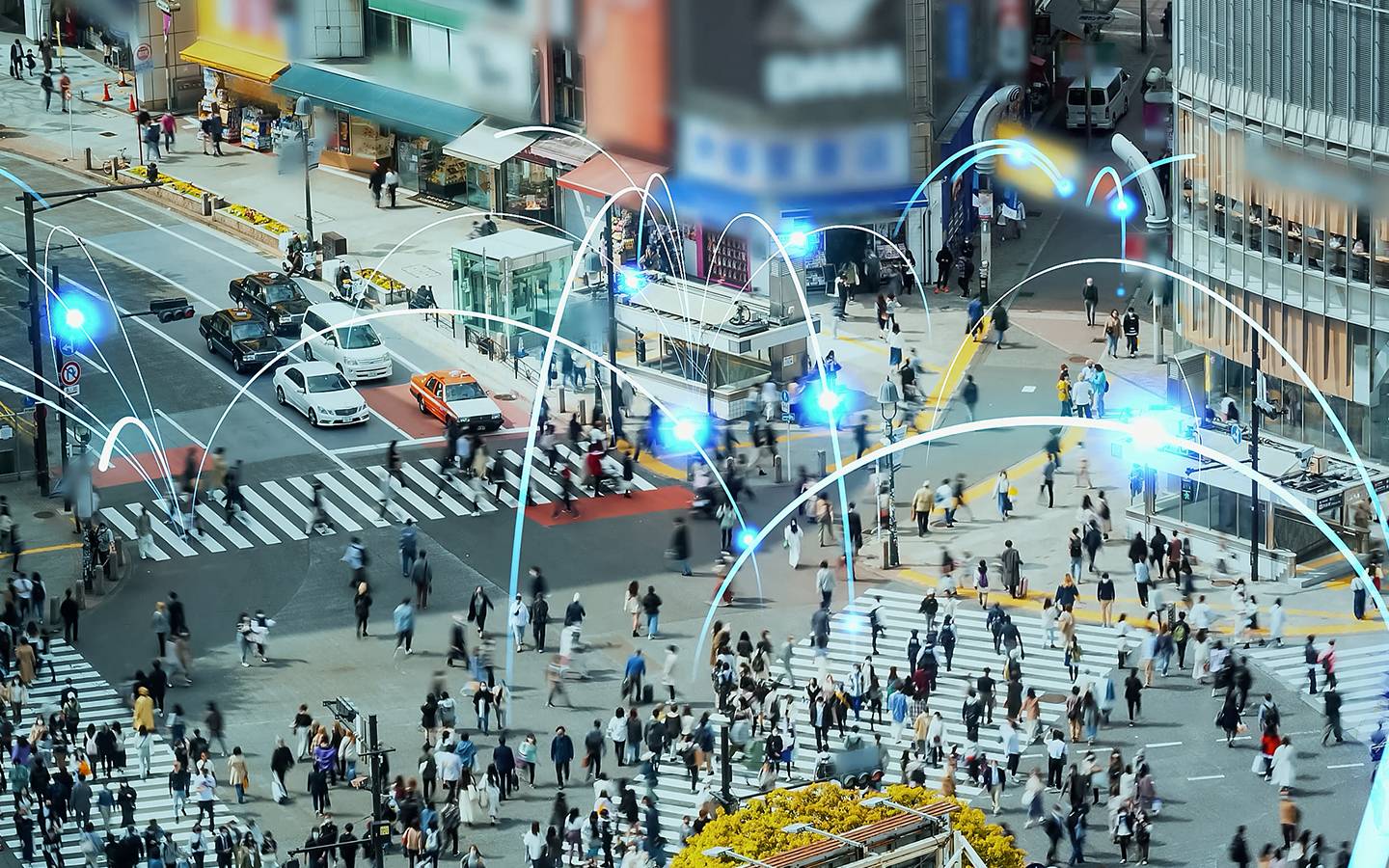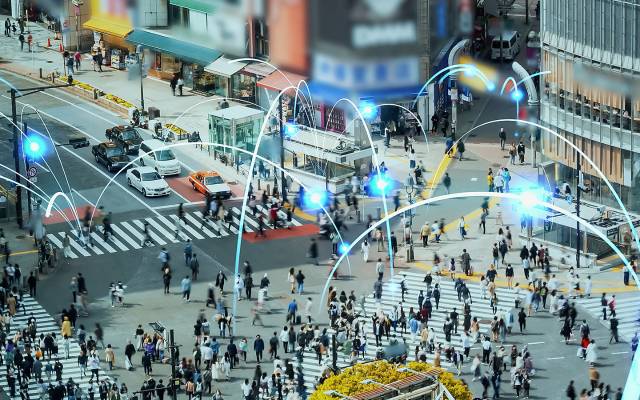All around the globe, populations are shifting away from rural communities and toward city living. According to PwC, 60% of the world’s population is expected to live in cities by the year 2030.
Technological advancements like the usage of biometric data in smart cities will make it possible to expand urban infrastructure to sustain a larger population because of this rapid urbanization.
From security and law enforcement to achieving new efficiencies in public transportation and emergency response, biometric data offers immeasurable value to smart cities facing population growth head-on. Before these cities can successfully leverage biometric data, they need to understand the technical requirements of storing and using it and address the ethical and data privacy considerations.
The Growing Role of Biometrics in Urban Development
As urban centers grow, infrastructure must scale to meet that growth. At the same time, sustainability and efficiency are increasing points of emphasis for local governments eager to control spending, reduce energy and resource costs, and avoid some societal and governmental challenges that come with managing large and fast-growing communities.
Biometrics technology has been identified as a realistic, cost-effective, and reliable solution to many urban development problems, especially challenges related to security and law enforcement, transportation, crowd management, and access control to public spaces and services. As a result, the global access control market—which is primarily built on biometric technology—is projected to grow more than $12.8 billion by 2025.
Enhancing Security and Access Controls
One of the most impactful and sought-after applications of biometric data is related to urban security and access control.
As populations swell, manual tactics for crowd management, surveillance, and other on-the-ground security efforts struggle with operational efficiencies and burdensome workloads. By embracing a technology-driven approach using biometric data for automated access control and population management, urban areas can better support law enforcement, security, event management, and other public services to ensure safety and order for all citizens consistently.
Here are two ways smart cities can quickly implement biometric data to improve security in their communities:
Secure Access to Public Spaces
Hand and fingerprint biometrics can restrict public space access to individuals deemed unsafe to the public.
Event centers, airports, and other public facilities could employ biometrics as part of their security protocols to keep out known risks and bar people from entering—even if they try to use coercion or false identification.
Integration with Surveillance Systems for Improved Public Safety
Facial recognition and other physiological feature technology can be used to extract biometric data that could help monitor crowds for individuals who are banned from public spaces or on a watch list created and managed by the smart city.
While the ethical application of biometric facial recognition technology must be accounted for in this use case, biometric data can be integrated with existing surveillance systems and on-the-ground security teams to increase scrutiny and observation of specific persons of interest. To achieve full scalability of these biometric capabilities, smart cities may want to invest in the development of highly scalable hybrid cloud data storage, which uses a mix of on-premises storage with a multicloud solution.
Streamlining Public Services
Most city-provided public services—from applying for a permit to using social assistance—involve burdensome paperwork to confirm identity and other service needs. This may lead to prolonged wait periods for essential services and additional expenses and delays because of lost or insufficient identification.
Biometric data can streamline the ID process by using individualized physical traits to verify someone’s identity quickly and accurately. Citizens can access services faster while government offices cut out inefficiencies related to processing paperwork. Shorter wait times will improve access to public services even as urban populations grow, increasing public confidence and satisfaction in these services.
Smart Transportation Solutions
Efficient public transportation infrastructure is already a point of emphasis in cities where traffic congestion and exhaust pollution are daily problems. Biometric data technology offers multiple solutions to congestion, crowd management, and access to public transportation.
Contactless Ticketing and Boarding
Fingerprints and other biometric markers can streamline the ticketing process for a faster, more convenient experience on public transit.
Local governments may also increase the ticketing revenue generated by reducing the number of free rides taken by passengers who don’t purchase a valid ticket.
Traffic Management and Congestion Control
Geolocation data is a type of biometric data that can use a person’s current location—along with other data points, such as the route being traveled and the current traffic conditions in a city—to recommend alternative commuting paths that will alleviate congestion and support more efficient and expedient travel through a city.
This can benefit citizens regardless of their mode of transportation. While vehicle-bound residents can be rerouted to avoid accidents or other slowdowns, citizens on foot or taking public transit can be redirected to faster, safer, and more efficient routes to their destination.
Emergency Response and Disaster Management
From severe weather and natural disasters to other threats to public safety, growing urban populations increase the potential chaos and catastrophe of poorly managed disaster scenarios.
Biometric data, combined with Internet of Things and other technology, can equip smart cities with powerful tools to improve their disaster response.
Quick and Accurate Identification in Emergencies
When emergency situations arise, geolocation plays a critical role in achieving fast response times for crisis intervention, emergency medical services, and other aspects of disaster response.
Geolocation data can streamline the identification and location of individuals in an emergency scenario, supporting emergency response teams in rapidly locating and assisting citizens in need.
Enhancing Disaster Preparedness and Response
By enabling a data-driven approach to disaster response, smart cities can overhaul emergency response strategies to improve resource allocation and coordinate the deployment of on-the-ground assistance.
Technology using biometric data can enhance disaster preparedness by building more consistency in response protocols. With better information at their disposal, response teams can approach any disaster scenario with fewer unknown variables that may disrupt services.
Balancing Innovation with Privacy and Security Concerns
The potential applications of biometric data in smart cities must also be balanced by the need for data privacy and security protocols to protect sensitive citizen data.
Since each person’s biometric data is unique, smart cities must secure it, use it responsibly, and comply with local and national regulations to prevent harm to their residents.
Permissibility and Renewability in Biometric Data Collection
The ethics of biometric data collection is largely centered around permissibility and renewability.
Permissibility refers to an individual’s biometrics data points that can be collected. Most physical traits, such as fingerprints and optical scans, are considered permissible traits.
Physical and behavioral traits, such as facial features, voice recognition, and writing style, are sometimes considered non-permissible. For example, the ethical application of biometric facial recognition technology typically requires explicit consent to be collected, along with other privacy-related requirements.
Meanwhile, renewable ability refers to the reliability of biometric data over time. Renewable data points, such as writing style and vocal patterns, tend to change over time and can be deliberately changed to avoid identification. While renewable biometric data can be used for identification and other smart city use cases, they are less reliable and require additional verification and support from other data points.
Ensuring Transparency and Consent in Collection and Processing
Smart cities must use biometric data in accordance with all applicable local and national laws. This may include gaining explicit consent for biometric data collection and meeting requirements for correctly processing, storing, and securing sensitive citizen data.
Your data collection practices and storage facilities are subject to data privacy regulations. Cities expanding their use of biometric data should invest in data storage infrastructure, including on-premises storage and cloud environments, that can meet strict data security requirements.
As the use of biometric data evolves, smart cities will need to prioritize data collection and data storage solutions that can seamlessly scale to support these expanded practices. Storage capacity, system reliability, and data security are key considerations when building and upgrading your data center infrastructure.
Partner with Seagate for Secure Smart City Biometric Data Storage Systems
Before implementing innovative smart city technology, you need to lay a data storage and management foundation to meet rigorous performance demands at scale. From physical data storage to edge-to-cloud mass storage, Seagate’s advanced data storage systems are designed to deliver the capacity, reliability, security, and instant availability necessary for supporting services on a city-wide scale.
Our Exos® hard drives and Exos CORVAULT™, are enterprise-class storage hardware, enabling data centers to aggregate petabytes of biometric and related smart city data.
By implementing Seagate Lyve™ Cloud, smart cities can overcome the limitations of multiple data storage locations and data silos, empowering infrastructure with frictionless data movement and automated, policy-driven orchestration of your data.
Thanks to our vendor-agnostic approach, Lyve Cloud and other Seagate products can be brought together to create a hybrid multicloud environment that lets your city prioritize availability, security, and data ownership while retaining cost control and the flexibility to adapt to evolving data storage needs.
Smart city IT architecture is a complex endeavor, but the right storage solutions can make managing, securing, and using biometric data easier than ever.
Talk to a Seagate expert to learn more.







